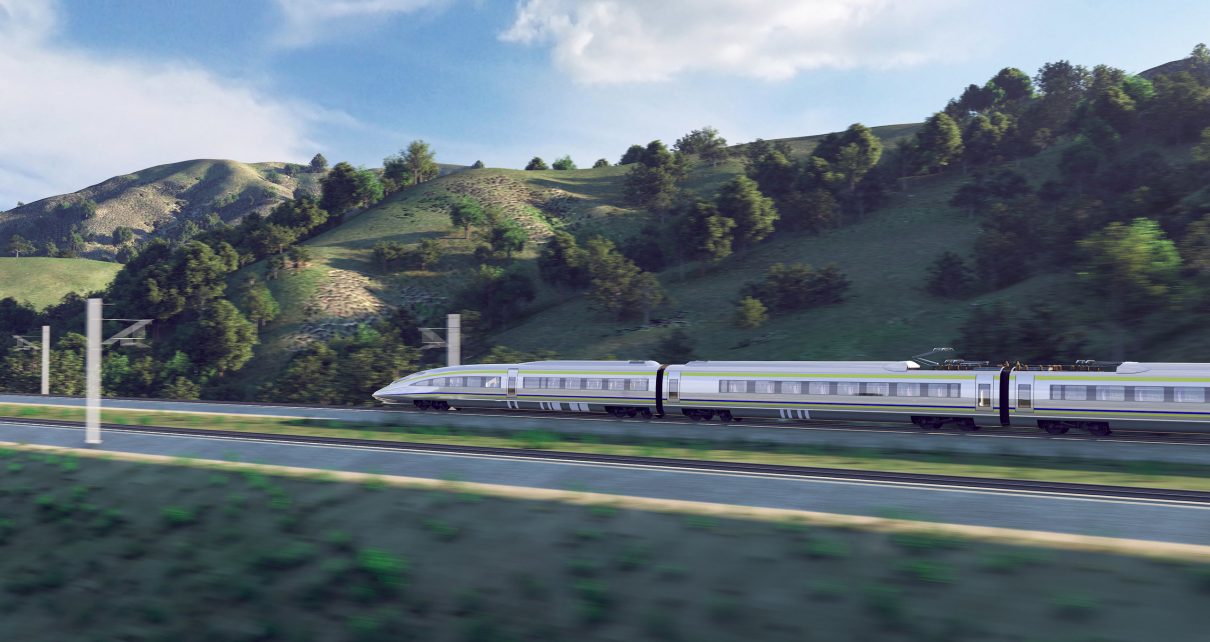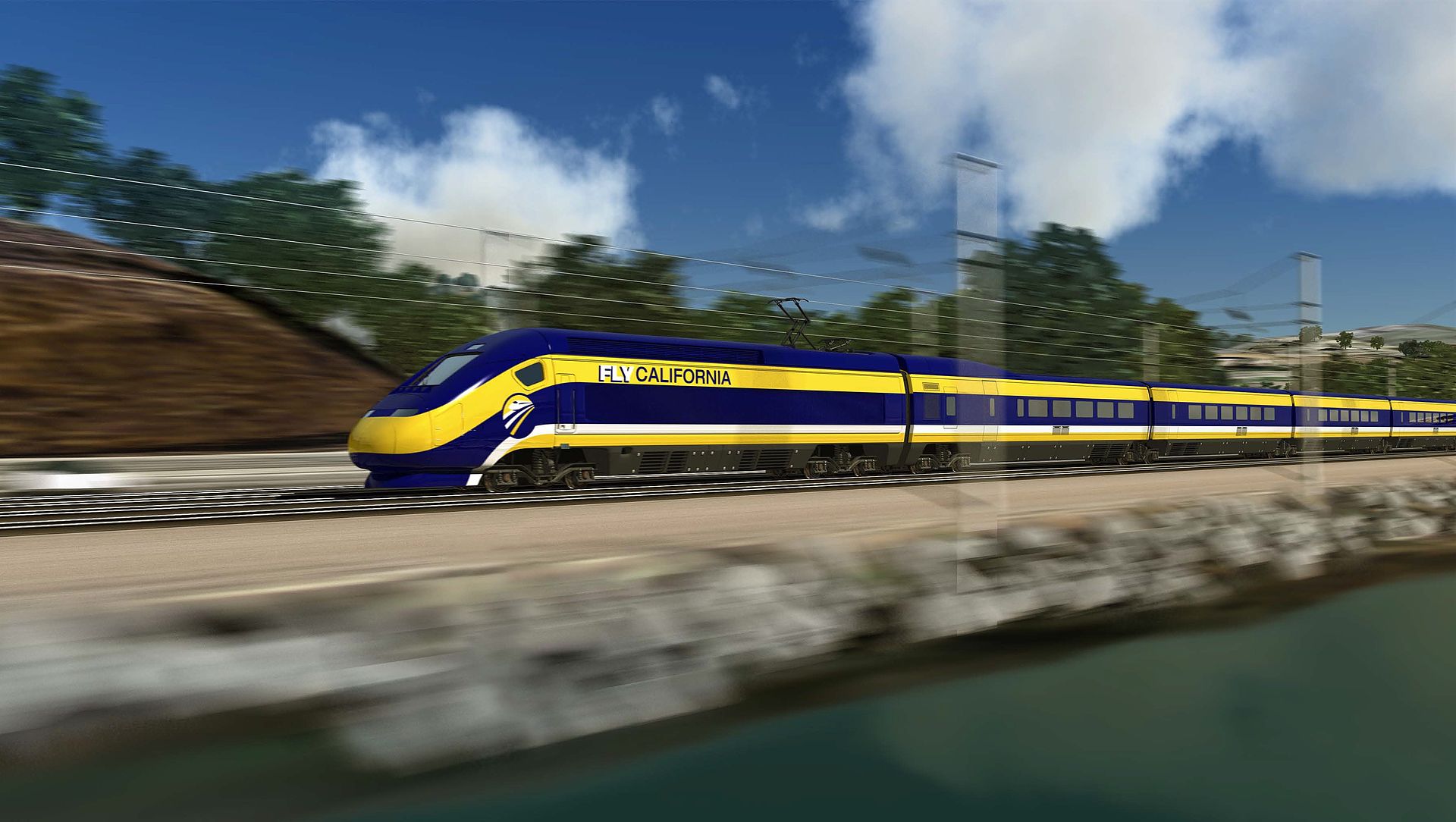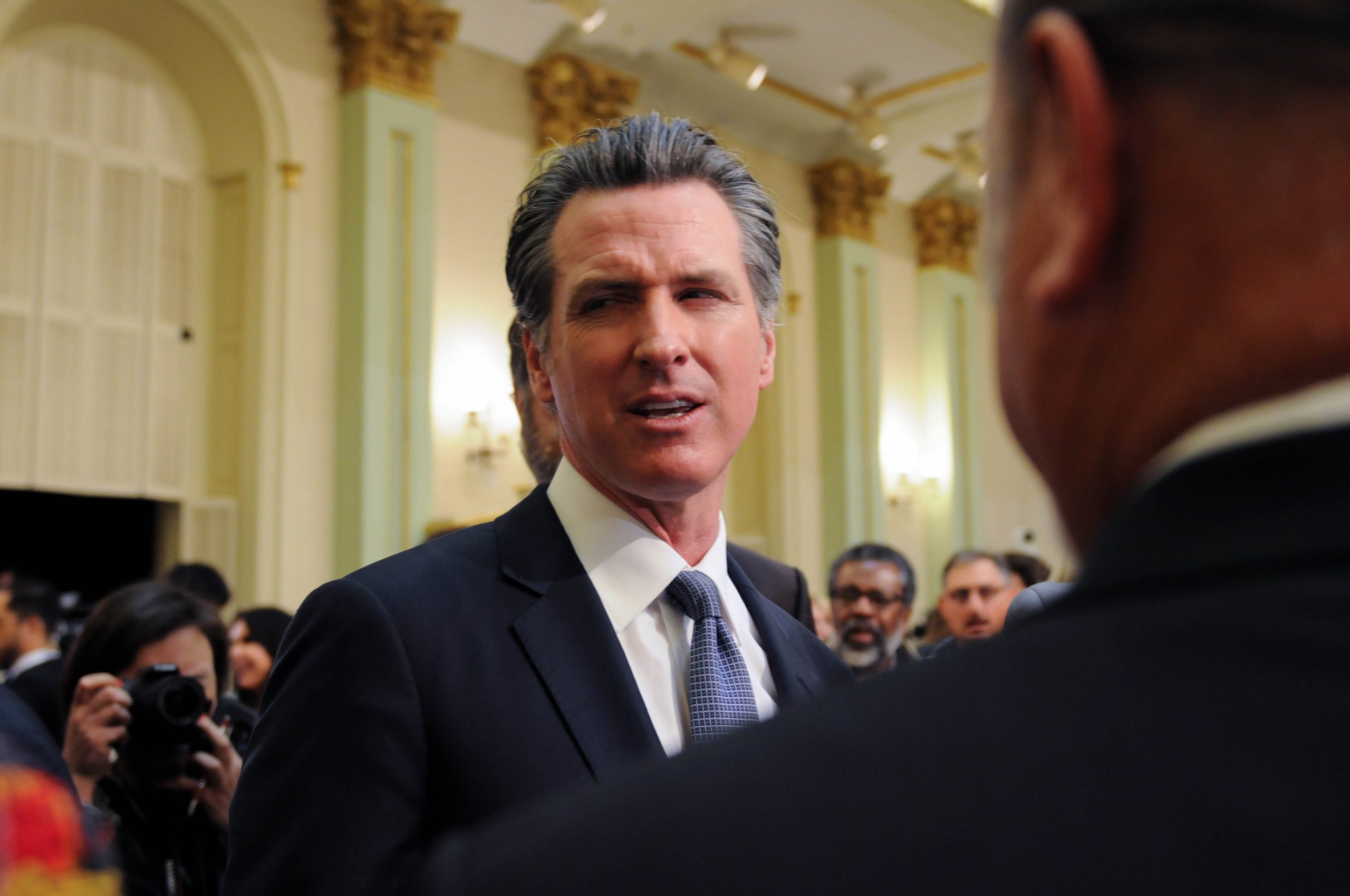
Close up of High-speed train in the Pacheco Pass. (Photo: her.ca.gov)
What Else California Could Have Done With the High-Speed Rail Funds
Your money not at work
By Thomas Buckley, July 25, 2022 2:50 am
First things first, let’s set some parameters for this article.
One – California’s High Speed Rail network is not going to be built. At this point, that’s a given.
Two – Even it were to be built and managed to hit its ridership projections it would require that 140 loaded-to-capacity trains would have to move both north and south each day. That means a train carrying 1,000 people would have to leave from both ends of the system every eight minutes.
Three – Those numbers, when compared against operating expenses and debt repayment, would have to translate into an average per person fare of about $150 each trip. And remember that not every trip will travel the entire length of the system, meaning the round-trip cost from LA to San Fran will run well over $400 if the system is to break even (depending upon how you buy your ticket, at least double if not triple what a flight on Southwest costs).
So, instead of spending $100 billion (a number that will continue to rise) on a system that is a decade beyond schedule (another number that will continue to rise), and even if the waters part and the planets align and a literal Deus ex Machina moment occurs and it does get finished it will still have no hope of matching the speeds and ticket prices DEMANDED of it in the original bond, what else could California have done with the money?
Those playing along at home may recall a similar article regarding the looting of the EDD – click here if you care to refresh your memory. And some of the expenditure concepts will be similar to the previous article.
In no particular order, one hundred billion dollars would pay for:
- Cover the entirety of the EDD fraud-generated debt plus leave about $70 billion aside for when, not if, the unemployment agency gets fleeced again…and again…and again.
- At about $700,000 per 500 square-foot unit (yes, that’s the going price now), every homeless person in the state could be given a free apartment.
- If, for whatever reason you would wish to, you could pave Death Valley.
- The Salton Sea could be restored every decade until the year 2300.
- San Diego could get three – not just one – floating airports.
- The entire shortfall in the CalSters teacher pension could be funded (or just most of the CalPers shortfall).
- The state could provide free insulin for four years to every diabetic Californian.
- Put into a trust, it would be enough money to cover the cost of every organ transplant procedure and the treatment of every Californian with HIV forever.
- According to the current total assessed property value, California taxpayers could buy Marin County and every building in it.
- Phil Mickelson could lose $10 million per year (which he reportedly has been doing) gambling for the next 10,000 years.
- You could build and stock 10 new Getty museums (better than a koi pond in the backyard, wouldn’t you say?).
- Instead of Stanford students paying $80,000 a year to go to school, each could actually be paid $150,000 per year to attend, year in, year out.
- Every bald Californian – no matter the age – could get free hair transplants.
- At the current clip, California could match the federal military aid budget for Ukraine for 14 years.
- Or the state could simply double Ukraine’s gross domestic product for a year.
- Every child in the state could go to private school for a year (fun fact: average private school tuition is nearly identical to the amount the public system pays per student – wonder who is getting the better deal?).
- The state could pay $8 million to every resident of the Pacific Island nation of Tuvalu and simply buy the country.
- On a transportation note, $100 billion placed in a trust would generate enough money each year to make all Bay Area and Southland public transit free of charge for eternity.
Continuing in a mobility frame of mind, NASA is planning to spend about $230 billion on its proposed manned mission to Mars in 2035. The high-speed rail funds would cover nearly half of that, or about one way of the round trip.
The rail project would – at its lengthiest – connect San Diego and Sacramento, a journey of about 550 miles.
The trip from Earth to Mars is about 110,000,000 miles.
Guess who is getting the better deal?
Note on methodology – While the comparison numbers above may be somewhat rounded they are, in fact, extremely well-grounded and are based upon reviews of business and government, etc. websites and other reliable sources of information.
- Benefit Fraud Problems and Solutions - November 7, 2024
- A Little Exit Poll - November 5, 2024
- Tomorrow’s Headlines Today! - November 5, 2024




This is an interesting list. I would contend that for a fraction of the projected cost of the HSR project, California could upgrade, electrify and expand the existing intercity Amtrak and commuter rail network within the state. In addition, some public transit agencies have already adopted or are considering adopting free fares using the federal Coronavirus stimulus funds.
Thanks for the comment.
As to water and fire and power and roads, those were included in the EDD waste story – link above – so folks can refer to that pretty much just triple the impacts – build 1500 miles of new urban freeways, increase energy production by 60 percent, clean the underbrush from every acre of public forest land, etc.
I left them out of this article so as not to repeat myself.
Now if the state would take that advice and stop repeatedly flushing money away, that might be a good thing.
That being said – everyone should feel free to post their ideas.
Thanks again for reading!
How about the cost to BUILD THE FRIGGIN’ RESERVOIRS that we voted for bond indebtedness to be incurred several years ago???
Or build next-gen nuclear power plants in whatever seismically safe areas we can identify to power California’s growing future electrical needs???
But no, these IDIOTS that we have in Sacramento DOUBLE DOWN on STUPID, and continue to allow OUR TAX DOLLARS to be WASTED on stupid pet projects that NO ONE WILL USE, resulting in a COMPLETE WASTE of OUR resources!!!
I am with you @CriticalD, let’s upgrade our water storage and get water to the once fertile grounds of central California and beyond.
Geez, I would settle for smooth roads and clean city streets all across this state! I guess that is a bridge too far.
Take what’s been futilely built and turn it into a bike path. Best case option. Might even be kinda useful to connect the major valley cities via bike path with charging stations for the e-bikes. Maybe rent space for businesses (Starbucks, Jamba Juice, In-and-Out) along the path to cater to these bikers. Maybe even micro-hotels. Don’t see much other use for California’s Stone(d)hedge.
LAX to SFO is roughly a million yearly passenger (in the midst of a pandemic) and has roughly 100kg of CO2 emission per passenger. 100 000 tons of CO2
It has been estimated that the social cost of carbon is over 50$ per ton. At this price California HSR will have a value of 5 million every year of operation. This is not including the commuter traffic between the Central Valley and SF and or LA, the traffic between other Bay Area and Los Angeles Area Airports. (With road transport of passenger by car being one of the first source of emission in the country, modal switch has major benefits)
In addition to the environmental benefits of such a system, it is worth thinking a minute about how much do highway cost to build and maintain, and that they have never been expected to re-pay such costs (not even maintenance).
CA HSR has to balance its operation costs not the cost of construction.
Last when you have a passenger going down in the middle of the trip it is quite likely someone else will take their seat for the other half of the journey.
As for a train every 8 minutes, I now quite a few stations where you have trains departure more frequent than that.
You’re nuts! First of all, the project recently admitted that they will only be able to install a single set of rails initially, so there will not be the CO2 numbers you have projected. Secondly, the segment being worked on now is the cheapest in the state project and is way OVER budget with only one set of rails. Thirdly, one set of rails will only allow trains to travel in one direction at a time, who choses whether the southerly trains or the northerly trains operate in the mornings or optionally in the afternoons? Fourth, who is going to pay those ticket prices to travel from Merced to Bakersfield, or Merced to Fresno, or Fresno to Bakersfield . . . . leaving in the morning and not getting a return train until the afternoon or vice-versa. Fifth, the trains will not even be that fast, there are too many stops/starts, so an average speed of maybe 100 mph will be barely faster than the Amtrak. Sixth, the state doesn’t even have the trains yet and have they even been included in the budget, especially if the second set of rails are now being cut? Seventh, where is the energy coming from to run the trains, the state doesn’t allow anybody to use hydro-electric in their energy arguments, so how will the carbon emissions be cut as you claim especially with our main nuclear power plant scheduled to be shut down before any train travels down the single track, power generation will replace those claimed CO2 savings? This project was a “white elephant” beyond all possible expectations, and the money could very well have been spent to widen I-5, 99, or build dams that would have been immediately more beneficial to California taxpayers and citizens – those who proposed and pushed this upon the people in this state should be ashamed of themselves!!! And, those who still support it are probably reaping huge benefits as a result of working on the project!
And Newsom wants to be president. I’m surprised anyone is still living in California.